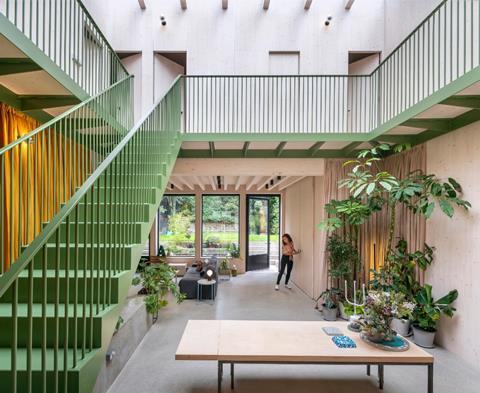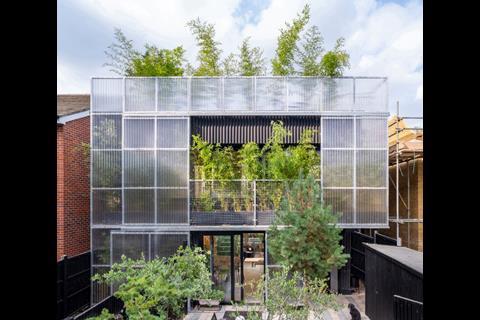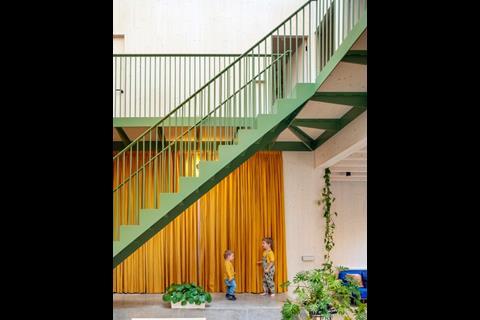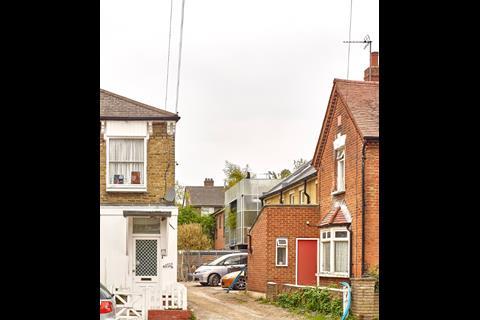Jury calls Tottenham home a “remarkable collaboration” between the architect and client.
A family home in north London described as a Moroccan-inspired urban oasis has been named as RIBA’s 2023 House of the Year.
Designed by Hayhurst & Co, the home, called Green House, has reimagined a typical terraced house in Tottenham on a constrained back alley site.
Based on traditional Moroccan riad courtyard houses, it has been designed around a huge central atrium area flooded with natural light and greenery.
On the outside, polycarbonate panels and dense planting hides what RIBA’s jury described as a “domestic greenhouse” and an “extraordinary ordinary home”.
The site, which is located in a conservation area, was originally occupied by a market garden.
The scheme’s extensive interior and exterior planting and its double aspect views out to its garden and roof terrace have sought to emphasise its connection to the site’s former character.

Its embodied carbon has also been minimised with the use of sustainable materials including cross-laminated timber walls, reclaimed concrete blocks and recycled cork rubber flooring, while its operational energy has been reduced with air-source heat pumps and solar panels.
Owners Tom and Amandine said they wanted to create a low-cost, functional five-bedroom home for their growing family, that maximised living space, gave a sense of airiness and access to nature.
Leading off from the central top lit atrium is a series of kitchen, dining and living room areas divided by an occasional step level, with floor-to-ceiling curtains which can be drawn to create more secluded spaces.
A bold green-painted steel staircase, the atrium’s statement feature, leads up to the home’s bathrooms and five first-floor bedrooms.

Dido Milne, CSK Architects director and chair of this year’s RIBA jury, said the home was a “remarkable collaboration” between the architect and client.
She said: “Green House, affectionately known as the ‘Tottenham Riad’, is a true oasis within the city. It is both airy and cosy, bold yet respectful of its neighbours. Your eye is simultaneously drawn upwards to open sky and down and out across the living room to verdant greenery.
“The close architect and client relationship, with a joint desire to deliver a truly sustainable home, is evident in all of the design decisions and detailing. On a confined urban site, the house was delivered to a tight budget with an economy of means – and it remains richer for it.
“Nowhere do you feel the site or budget was restricted. It feels both luxurious, homely, deeply private and relaxing.”
Also on the jury panel was Bev Dockray, co-founder of Coppin Dockray Architects, Jessam Al-Jawad, director and co-founder of multi-disciplinary architecture studio Al-Jawad Pike and Albert Hill, co-founder of The Modern House and Inigo.






















No comments yet